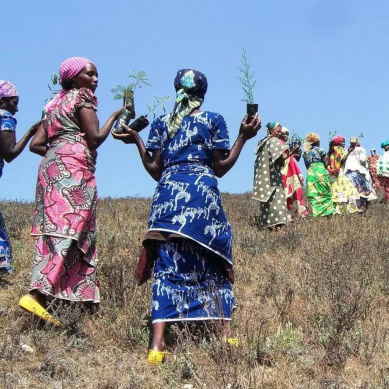
Early last year, children’s hospitals across New York City had to pivot to deal with a catastrophic Covid-19 outbreak. “We all had to quickly learn – or semi-learn – how to take care of adults,” says Betsy Herold, a paediatric infectious-disease physician who heads a virology laboratory at the Albert Einstein College of Medicine.
The reason: while hospitals across the city were bursting with patients, paediatric wards were relatively quiet. Children were somehow protected from the worst of the disease.
Data collected by the US Centers for Disease Control and Prevention from hospitals across the country suggest that people under the age of 18 have accounted for less than two per cent of hospitalisations due to COVID-19 — a total of 3,649 children between March 2020 and late August 2021.
Some children do get very sick, and more than 420 have died in the United States, but the majority of those with severe illness have been adults – a trend that has been borne out in many parts of the world.
This makes SARS-CoV-2 somewhat anomalous. For most other viruses, from influenza to respiratory syncytial virus, young children and older adults are typically the most vulnerable; the risk of bad outcomes by age can be represented by a U-shaped curve. But with Covid-19, the younger end of that curve is largely chopped off.
It’s “absolutely remarkable”, says Kawsar Talaat, an infectious-disease physician at the Johns Hopkins Bloomberg School of Public Health in Baltimore, Maryland. “One of the few silver linings of this pandemic is that children are relatively spared.”
The phenomenon was not entirely surprising to immunologists, however. With other viruses, adults have the advantage of experience. Through prior infection or vaccination, their immune systems have been trained to deal with similar-looking pathogens. The novelty of SARS-CoV-2 levelled the playing field, and showed that children are naturally better at controlling viral infections.
“We always think of children as germ factories,” says Dusan Bogunovic, an immunologist and geneticist at the Icahn School of Medicine at Mount Sinai, in New York City. But it’s not because their immune systems are ineffective; they’re just inexperienced, he says.
Research is beginning to reveal that the reason children have fared well against Covid-19 could lie in the innate immune response – the body’s crude but swift reaction to pathogens. Kids seem to have an innate response that’s “revved up and ready to go”, says Herold. But she adds that more studies are needed to fully support that hypothesis.
The emergence of the Delta variant has made finding answers more urgent. Reports suggest that in the United States and elsewhere, children are starting to make up a larger proportion of reported infections and hospitalisations. These trends might be due to Delta’s high transmission rate and the fact that many adults are now protected by vaccines.
For now, there is no clear evidence that children are more vulnerable to or more affected by Delta compared with earlier variants. But SARS-CoV-2, like all viruses, is constantly mutating and becoming better at evading host defences, and that could make understanding childhood’s protective benefits more important.
“We haven’t paid much attention to age-related differences in immune responses because it hasn’t had huge clinical implications previously,” says Lael Yonker, a paediatric pulmonologist at Massachusetts General Hospital in Boston. “Covid-19 highlights that we need to better understand these differences.”
Why are children better than adults at controlling SARS-CoV-2? At first, researchers thought that children were simply not getting infected as often. But the data show that they are – at least nearly (children under age 10 might be slightly less susceptible).
The American Academy of Pediatrics found that, up until late last month, some 15 per cent of all Covid-19 cases in the United States had been in individuals aged under 21 – that’s more than 4.8 million young people (see ‘Young and infected’).
And a survey in India that tested people for antibodies against SARS-CoV-2, which are produced after infection or vaccination, found that more than half of children aged 6–17 – and two-thirds of the population overall – had detectable antibodies.
Clearly, children are getting infected. So maybe the virus can’t replicate in them as well as it does in adults. Some researchers proposed that children might have fewer ACE2 receptors, which the virus uses to enter and infect cells. There is conflicting evidence on age-related differences in ACE2 expression in the nose and lungs, but scientists who measured the ‘viral load’ – the concentration of viral particles – in people’s upper airways have seen no clear difference between children and adults.
In one analysis of 110 children, posted as a preprint on June 3, researchers found that infants through to teenagers could have high viral loads, especially soon after being infected. “Not only is the virus there and detectable, but it’s live virus,” which means these individuals are also infectious, says Yonker, who led the study.
Another proposal is that children, who seem to be sniffling all year round, might be more exposed to other coronaviruses that cause the common cold, and therefore have a squad of antibodies at the ready with some ability to latch on to the pandemic coronavirus. But the weight of evidence suggests that adults also have this immunity.
Strikingly, these ‘cross-reactive’ antibodies don’t offer any special protection – if anything, they could lead to a misguided response.
Having largely discounted these hypotheses, Herold and her colleagues set out to look at whether there was something specific in children’s immune response that gave them a benefit.
Some clues were circulating in the blood of those who have been infected. In a study comparing 65 individuals aged under 24 with 60 older people, Herold and her colleagues found that, overall, the younger patients (who had milder symptoms) produced similar levels of antibodies to the older cohort.
But they had reduced levels of specialised antibodies and cells related to the adaptive immune response, the arm of the immune system that learns about a pathogen and helps to quickly quash it if it ever returns.
Specifically, kids had lower levels of ‘neutralising’ antibodies that block SARS-CoV-2 from infecting cells; antibodies that label infected cells to be gobbled up and destroyed by other cells; and white blood cells known as regulatory and helper T cells.
By contrast, the children in the study had higher levels of the signalling proteins interferon-γ and interleukin-17, which alert the immune system to the arrival of a pathogen. These were probably produced by cells that line the airways, and are involved in mediating innate immunity. Herold suspected that the children mounted a less robust adaptive immune response because their innate response was more efficient at eliminating the threat. An overactive adaptive response in adults, she says, could be causing some of the complications in Covid-19.
- A Nature report











